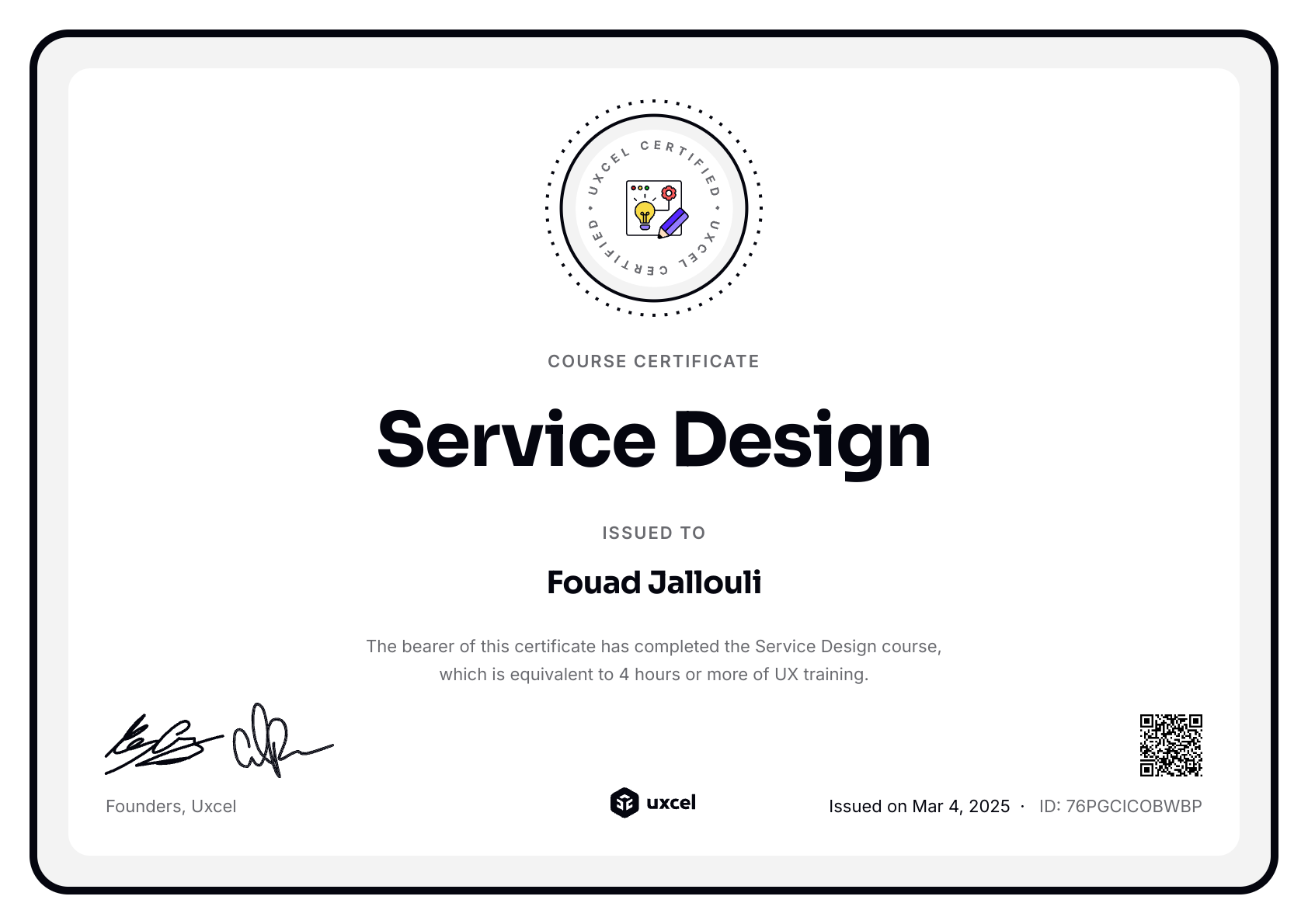Service Design
Learn the basics of service design research, ideation, prototyping, and implementation to align teams, improve delivery, and create seamless customer experiences.
About this course
Service design is all about creating great experiences for customers. It's a multidisciplinary approach that leverages design principles and methods to make services meaningful, efficient, and user-centered.
Why has service design been in the spotlight lately? According to a survey conducted by Deloitte, 86% of employees from top global companies agree that customer experience is a vital driver of competitive advantage.
In today's world, services have become increasingly complex with multiple players, processes, and touchpoints. It's a challenge to keep things consistent and seamless. Service design equips us with effective methods and frameworks to visualize and map these intricate service ecosystems and design smart interventions that take the service delivery experience to the next level.
In this course, you'll not only learn the art of creating essential deliverables at each stage of the process, but you'll also discover practical strategies for their seamless integration.
We'll explore how to conduct effective research and harness powerful deliverables such as customer journey maps, service blueprints, personas, and jobs to be done.
The course will dive into ideation techniques that foster collaboration among stakeholders from various departments. You'll unlock methods to encourage active participation and idea generation, ensuring a diverse range of perspectives enriches the service design process.
As you progress through the course, you'll become familiar with prototyping methods and gain the skills to confidently navigate the implementation stage. You'll learn how to effectively utilize prototyping outcomes and avoid feeling overwhelmed by the abundance of data.
Details
Prerequisites
Skills you’ll gain with course:
Topics covered
Syllabus
Introduction to Service Design





Level Test
Research Stage of Service Design





Level Test
Ideation Stage of Service Design





Level Test
Prototyping and Implementation Stages of Service Design




Level Test
Earn a certificate of completion

Meet your course instructor

I’m a Service Design and Product leader with industry experience spanning fintech, energy, social services, retail, and government. I have a strong track record of helping organizations meet their business goals through thoughtful, strategic design. My skill set includes product management, business model innovation, problem finding, service design, customer research methods, and leading remote cross-functional design and development teams.
I specialize in bringing products to market across various industries, guiding them from ideation through process flows, business modeling, prototyping, user testing, and release—both for B2B and B2C audiences. I’m also a proud graduate of the Master of Business Administration (MBA) program in Executive Management from Royal Roads University.
Loved by learners from world’s top companies












Related courses

Writing Effective Product Specs

Mentorship Mastery

Workshop Facilitation
FAQs
The Service Design course is a comprehensive learning experience that delves into the principles, methodologies, and practical techniques of service design. Throughout the course, you will gain a deep understanding of how to create exceptional service experiences that meet user needs and drive business success.
You will delve into designing and mapping customer journeys, understanding the touchpoints and interactions that shape the overall service experience. You will also discover how to create service blueprints, visualizing the processes and resources required to deliver a seamless service.
In addition, the course covers prototyping methods and their role in the implementation phase of service design. You will gain insights into different prototyping techniques and learn how to leverage prototypes to test and refine your service concepts.
No specific prior knowledge is required to enroll in this course. The Service Design course is designed to cater to individuals with varying levels of experience and backgrounds. Whether you are an aspiring designer, a professional in a related field, or simply curious about service design, you will find value in the course.
While the UX Design Foundations course provides a solid understanding of user experience design principles and practices, taking the Service Design course can still be beneficial for designers. Service design offers a broader perspective that encompasses the entire end-to-end service experience, including interactions between multiple touchpoints, stakeholders, and processes. It focuses on designing cohesive and impactful services that meet user needs and business objectives.
By enrolling in the Service Design course, designers can expand their skill set and gain insights into the unique challenges and methodologies specific to service design. They will learn about techniques such as customer journey mapping, service blueprints, and stakeholder engagement, which are essential for designing and improving services.
The Service Design course will also provide designers with a broader understanding of how their UX design work fits into the larger context of service delivery. It will help them see the connections between individual product interfaces and the overall service ecosystem.
For new learners, the first level of each course is available free of charge! This allows you to experience the course without any initial investment.
However, if you're seeking a deeper and more comprehensive learning journey, we recommend our Pro Membership. With this subscription, you gain full access to all our courses, which includes additional lessons, engaging design challenges, and thorough assessments.
Additionally, Pro Membership entitles you to receive a certificate upon completion of a course and personalized feedback from experts for all your challenge submissions. To explore the pricing details and find the best plan for your learning needs, please visit our pricing page.



